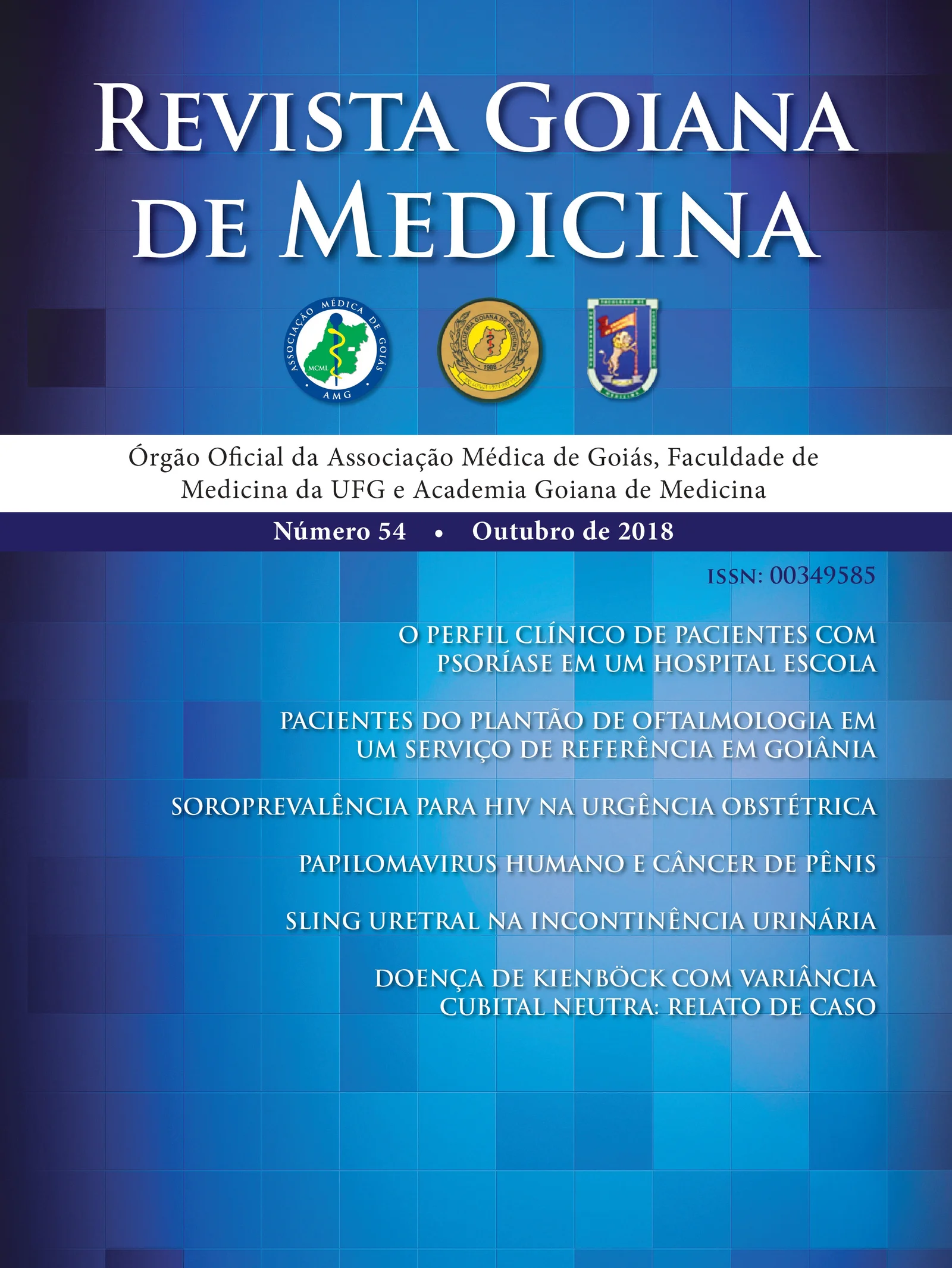Patients of ophthalmologic emergency in a reference service in Goiânia
Keywords:
EMERGENCY, OPHTHALMOLOGY, CONJUNCTIVITISAbstract
OBJECTIVE:To evaluate the demographic and clinical aspects of the patients who are looking for emergency ophthalmology services, in order to contribute to the mapping of the problem and, thus, to guide preventive policies and future treatments. METHODS:This was a cross-sectional study in which the data of the patients treated at the IOG PA between May 1, 2017 and September 3, 2017 were collected, totaling 126 consecutive days. The following patient data were collected: age, gender, diagnostic hypothesis, need for return on duty and / or specialist, and whether the patient was referred for any procedure or for evaluation in a surgical center. The inclusion criterion was all those patients who underwent initial care performed by First Year Resident (R1) in Ophthalmology at the IOG, who were admitted in the period described above and who had all the data filled in both the work table and in the hospital chart. RESULTS:Of the 1,062 patients seen on duty on these days, 783 were attended by the R1. Among the 783 patients treated, 302 had conjunctivitis, 86 hordeoles, 78 foreign bodies, 75 corneal abrasions, 45 subconjunctival hemorrhages, 33 keratitis, 27 dry eyes, 20 normal ophthalmologic examinations, 11 ocular traumas, 10 pingueculitis and 96 others. CONCLUSION: More studies were carried out in the area, including data collection that would make it possible to correlate the most frequent diagnoses with public health deficits.


